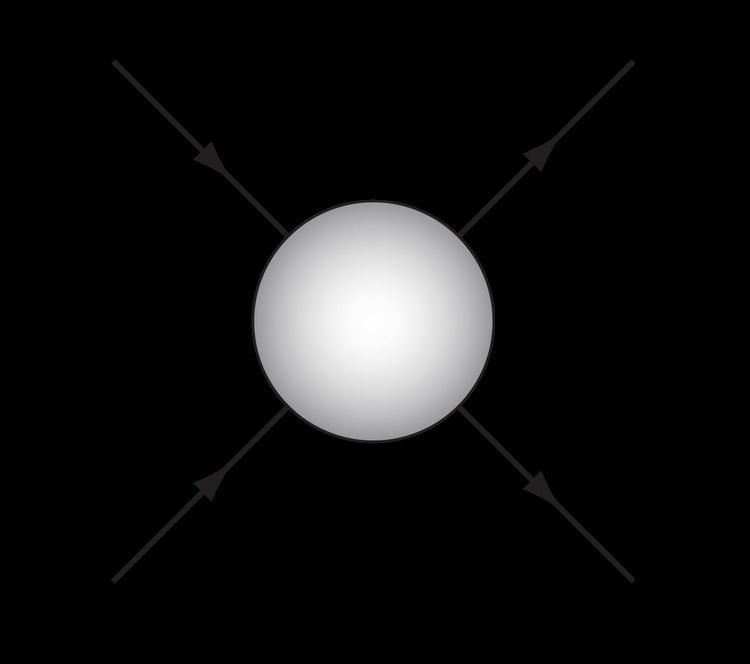 | ||
In theoretical physics, the Mandelstam variables are numerical quantities that encode the energy, momentum, and angles of particles in a scattering process in a Lorentz-invariant fashion. They are used for scattering processes of two particles to two particles. The Mandelstam variables were first introduced by physicist Stanley Mandelstam in 1958.
Contents
If the Minkowski Metric is chosen to be
Where p1 and p2 are the four-momenta of the incoming particles and p3 and p4 are the four-momenta of the outgoing particles, and we are using relativistic units (c=1).
s is also known as the square of the center-of-mass energy (invariant mass) and t is also known as the square of the four-momentum transfer.
Feynman diagrams
The letters
For example, the s-channel corresponds to the particles 1,2 joining into an intermediate particle that eventually splits into 3,4: the s-channel is the only way that resonances and new unstable particles may be discovered provided their lifetimes are long enough that they are directly detectable. The t-channel represents the process in which the particle 1 emits the intermediate particle and becomes the final particle 3, while the particle 2 absorbs the intermediate particle and becomes 4. The u-channel is the t-channel with the role of the particles 3,4 interchanged.
Relativistic limit
In the relativistic limit, the momentum (speed) is large, so using the relativistic energy-momentum equation, the energy becomes essentially the momentum norm (e.g.
So for example,
because
Thus,
Sum
Note that
where
Proof
To prove this, we need to use two facts:
So, to begin,
Then adding the three while inserting squared masses leads to,
Then note that the last four terms add up to zero using conservation of four-momentum,
So finally,
